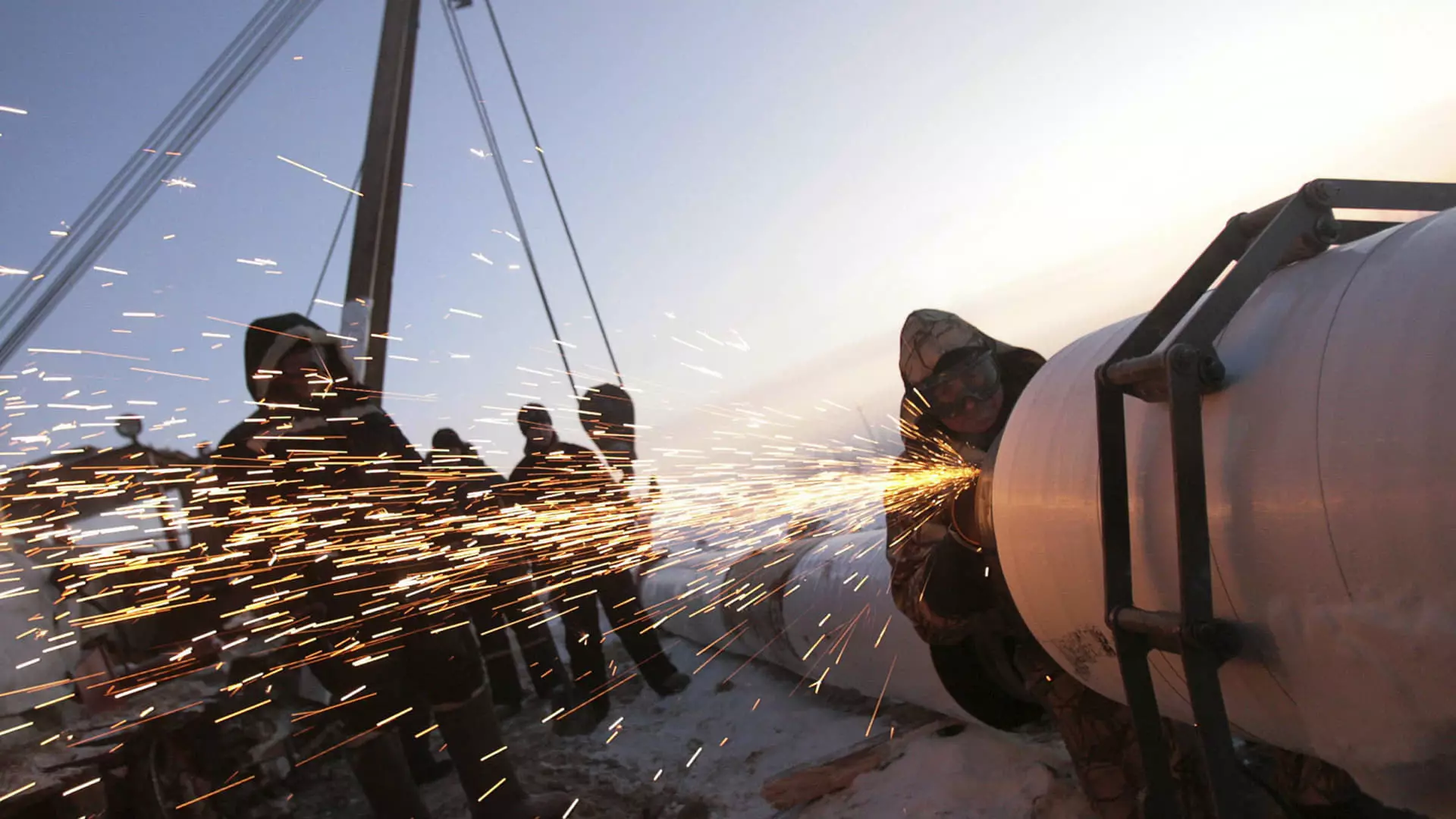In recent months, the landscape of natural gas supply to Europe has undergone seismic shifts, primarily due to the geopolitical tensions arising from the ongoing conflict in Ukraine. On a typical Saturday, Russia’s state-run gas giant Gazprom attempted to maintain a steady flow of gas to Europe through Ukraine, albeit with notable exceptions. One glaring incident occurred when supplies to Austrian energy firm OMV were abruptly halted. This development followed an announcement from Vienna indicating that Moscow had signaled a forthcoming cessation of gas flows, referencing a recent arbitration ruling that favored OMV over Gazprom for unfulfilled contracts.
Previously, before the onset of the Ukraine conflict, Russia stood as the foremost supplier of natural gas to Europe. However, an overwhelming drive to diminish this reliance has led to significant reductions in Gazprom’s customer base across the European Union (EU). The destruction of the Nord Stream pipeline in late 2022 further exacerbated the situation, marking a pivotal blow to Russia’s ability to export gas to continental Europe.
Amongst the significant routes for Russian gas, the Urengoy-Pomary-Uzhgorod pipeline—dating back to the Soviet era—represents one of the last lifelines for gas delivery to European markets. However, this pipeline faces closure at the conclusion of the current year, following Ukraine’s withdrawal from a five-year transit agreement. This agreement had been instrumental in supplying gas to Slovakia, the Czech Republic, and Austria. Such developments illustrate Kyiv’s refusal to participate in a framework that entails supporting an aggressor state.
As of Saturday, Gazprom reported that deliveries to the European market remained relatively unchanged at 42.4 million cubic meters, consistent with the previous day’s figures. Yet, the overall dynamics highlighted concerning trends: flows to Austria from Slovakia were approximately 16% lower than the monthly average, indicating diminished confidence and demand for Russian gas.
The situation surrounding OMV is particularly telling of the broader complexities impacting Russian gas relations. Following an arbitration award mandating Gazprom to pay OMV over €230 million for non-compliance with contracts intended for its German subsidiary, Austria’s energy regulator declared a halt to gas deliveries as of 6 a.m. local time. OMV’s strategy to leverage the arbitration winnings against existing invoices has effectively created a tenuous situation for gas supplies, posing questions about the long-term feasibility of Russian gas in Austria and its neighboring countries.
The ramifications of this arbitration could spell dire consequences: with OMV accounting for about 40% of the natural gas flow from Russia into Ukraine, the loss of such a substantial volume could precipitate further contractions in the energy supply available to Central Europe.
A striking aspect of the ongoing energy crisis has been the shifting allegiances and strategic dialogues among European leaders and Russia. Just as Chancellor Olaf Scholz initiated a conversation with President Vladimir Putin—his first in almost two years—discussions surrounding energy supply have taken on a heightened urgency. According to Kremlin communications, Putin asserted that Russia has historically honored its contractual obligations, expressing availability for “mutually beneficial cooperation” should Germany demonstrate renewed interest.
These interactions underscore a deeply embedded complexity in European energy politics, revealing attempts to bridge divides amid an increasingly fractious landscape. Yet, many European nations, learning from the disruptions of the conflict, are now more cautious about their energy dependencies.
As of now, Russia’s ability to sustain its position as a key natural gas supplier to Europe has dramatically weakened. The longstanding energy partnership that evolved from mutual dependencies has eroded against the backdrop of war and strategic sabotage, opening avenues for alternative suppliers such as Norway, the United States, and Qatar to emerge as prominent players.
By the end of 2023, exports via Ukraine are expected to plummet to approximately 15 billion cubic meters, a stark contrast to pre-war levels that accounted for around 35% of European demand. Without substantial supply channels like Austria, Russian gas will precariously lean on viability through Hungary and Slovakia, which now rely heavily on alternative routes, complicating any revival of previous energy dynamics.
The fate of Russian gas in Europe is entangled in a web of geopolitical complexities, market adjustments, and evolving energy strategies. With traditional supply lines facing disruptions, Europe is poised to reexamine and reshape its energy foundations, thereby ushering in a new era marked by diversified sources and decreased reliance on a single entity.


Leave a Reply